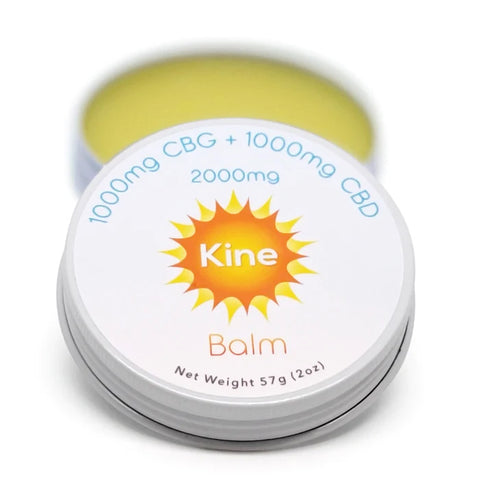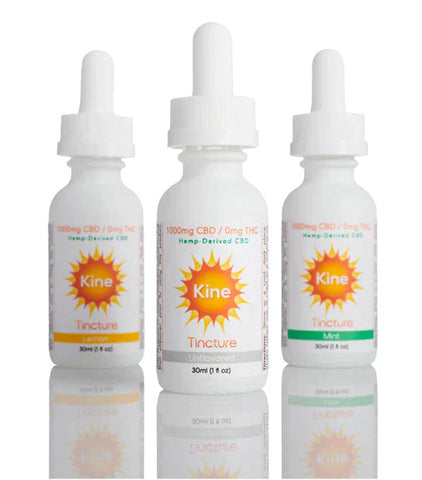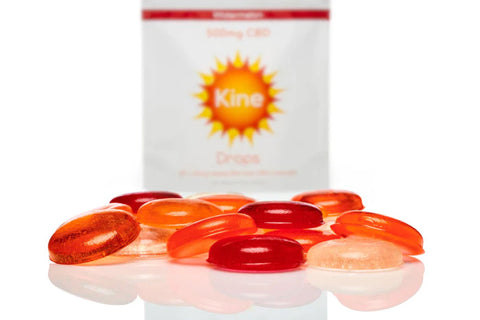What a long road it’s been from the hysteria of Reefer Madness to the maven of marijuana, Snoop Dogg, dropping “Pocket Like It’s Hot” to sell Hot Pockets in a national ad campaign. But navigating chemical compounds can be intimidating for those of us who didn’t excel at AP Chemistry in high school.
Cannabis plants have come a long way, from being associated with hysteria and negative stereotypes to being recognized for their potential therapeutic benefits. The two most well-known cannabinoids found in cannabis are THC (tetrahydrocannabinol) and CBD (cannabidiol).
However, the world of cannabinoids goes beyond just THC and CBD. In recent years, other non-intoxicating cannabinoids like
CBG (cannabigerol),
CBN (cannabinol), and
CBC (cannabichromene) have emerged on the market, each with its own unique properties and potential benefits.
Cannabidiol (CBD) may be the talk of the town, but as the saying goes, variety is the spice of life.
In this comprehensive guide, we will delve into the world of non-intoxicating cannabinoids and explore the similarities, differences, and potential uses of CBG, CBD, CBN, and CBC. Whether you're new to cannabinoids or looking to expand your knowledge, this guide will provide you with the information you need to make informed decisions about which cannabinoid may be right for your specific needs.
A Whole New World of Cannabinoids is Emerging
Mature Cannabis sativa flower contains hundreds of different compounds and the majority of these substances are either flavonoids, terpenes, or analogs (copies) of a few central cannabinoids. Depending on who you ask, there are either six or eight important, chemically distinct cannabinoids, and each of these cannabinoids has unique properties.
Starting with the widespread realization that CBD may have potent therapeutic value in the early 2000s, it took nearly 10 years for breeders to develop high-quality Cannabis sativa phenotypes that are high in CBD instead of THC. It’s rather remarkable, therefore, that efforts to breed hemp strains that are high in CBG, CBN, and CBC have evolved at such a rapid pace.
These days, cannabinoid producers have either bred strains that are high in one of the six major cannabinoids or they’ve developed processes to convert more widely available cannabinoids, such as CBD or CBG, into CBN or CBC. As a result, products containing CBD, CBG, CBN, and CBC are now widely available, making it well worth our time to study each of these cannabinoids in detail to determine their strengths both alone and when combined.
Introducing CBG: The Rising Star of Cannabinoids
Let's begin our exploration of non-intoxicating cannabinoids with cannabigerol (CBG). CBG is found in all cannabis plants and is gaining popularity as a potential therapeutic compound. It is known for its potential pain-relieving, anti-inflammatory, and neuroprotective properties. Some studies suggest that CBG may also have anti-cancer and antidepressant effects.
CBG is considered the "stem cell" of cannabinoids as it can convert into other cannabinoids like CBD, CBC, or THC through an enzymatic process. Unlike other cannabinoids, CBG is derived directly from plants that naturally produce high concentrations of CBG, rather than being derived from other cannabinoids through conversion processes.
While CBG breeding is still in its early stages, hemp strains with high CBG concentrations are becoming more available. Although CBG flower strains with concentrations above 15% are rare, even small amounts of CBG can provide a glimpse into its potential benefits.
Like CBD, CBG is non-intoxicating, and many hemp users report that the effects of these cannabinoids feel almost identical. Under the hood, however, CBG interacts with your body’s systems via very different mechanisms than CBD, and based on initial research, CBG appears to offer a few unique benefits. CBG is another non-intoxicating cannabinoid that many people find useful for supporting inflammatory pain, mood support, and focus without the sleepy effects they may find with regular CBD products.
Potential Pain and Inflammation Benefits
A 2008 review of the available evidence covered studies indicating that CBG may act as an agonist at the CB1 and CB2 receptors without causing any intoxicating effects. This review also pointed out that CBG may additionally act as a GABA reuptake inhibitor.
These results indicate that CBG may have a relationship with both neuropathic and inflammatory pain. The usefulness of CBG for neuropathic pain was further explored by a
2018 study, indicating that interest in CBG for pain remains strong within the scientific community.
Potential Digestive Benefits
Potential Antibacterial Benefits
Preliminary research has been conducted into the potential antibacterial properties of CBG. Scientists believe that there are sufficient grounds to further investigate the usefulness of this cannabinoid for bacterial infections.
CBG vs. CBD: Exploring Similarities and Differences
CBG and CBD share structural similarities and have overlapping effects, but they also have distinct characteristics. While CBD primarily acts on the central nervous system, CBG's effects are more focused throughout the body's periphery. For example, CBG has shown potential for digestive benefits, which is not a primary target of CBD research.
While some of the effects of CBG overlap with the effects offered by CBD, these cannabinoids are different enough to merit using them together. In addition, combining two or more cannabinoids appears to provide the
entourage effect, an as-yet unexplained phenomenon that appears to enhance the effects of cannabinoids when more than one of these unique compounds are ingested at the same time.
Rather than choosing between CBD and CBG, using both cannabinoids simultaneously may offer the best results for individuals seeking a comprehensive cannabinoid experience.
Kine offers 1:1 ratio CBD/CBG in a sublingual
lozenge, a clean MCT oil-based
tincture, and our ultra-popular topical
Kine Balm.

Understanding CBN: The Sleep Support Cannabinoid
Cannabinol (CBN) is a non-intoxicating cannabinoid that has gained attention for its potential sleep support properties. While there are cannabis strains high in CBG or CBD, high-CBN strains are not as prevalent. Most CBN on the market is derived through a chemical conversion process that transforms CBD into CBN.
CBN was extensively researched alongside THC and CBD in the early days of cannabis studies but lost focus over time. However, the recent CBD revolution has revived interest in CBN and its unique benefits.
While scientific research on CBN's sleep support properties is ongoing, many users have reported impressive results when using CBN for sleep. CBN also offers potential antibacterial, neuroprotective, and appetite-stimulating benefits.
Potential Antibacterial Benefits
Like CBG, CBN has been researched for its potential antibacterial qualities. A
2008 study showed, for instance, that CBN eliminated certain types of MRSA bacteria, but these results have not been corroborated by further research. Since these two cannabinoids have different activity profiles,
using CBG and CBN in tandem to fight bacterial infections should be a target of future research.
Potential Neuroprotective Benefits
A 2004 study found that CBN delayed the onset of amyotrophic lateral sclerosis (ALS), a type of neurodegenerative disease. Based on this research, scientists suspect that CBN may be useful as a general neuroprotective agent, which would be a reasonable assumption since every other cannabinoid is also believed to have at least some neuroprotective activity.
Potential Appetite Benefits
THC has been used for years as an appetite stimulant, but the intoxicating qualities of this cannabinoid make it undesirable for this purpose. A 2012 pre-clinical study found that CBN increased appetite, which has led some cannabinoid experts to believe that this cannabinoid could serve as an adequate replacement for THC that doesn’t induce significant psychoactive effects.
Other Potential Benefits
CBN is typically touted as a sleep aid, and many people turn to CBN products for their calming effects for a melatonin-free, natural sleep support supplement. While there’s only a very limited amount of scientific evidence indicating that CBN may be useful for sleep, consumers have used this cannabinoid extensively as a sleep aid, which has provided a lot of compelling anecdotal evidence. CBN has also been investigated for its analgesic qualities.
CBN vs. CBD: What Is The Difference Between CBD and CBN?
If CBD is the dependable elder sibling, then CBN and CBG are the adventurous younger twins, climbing up the popularity charts quicker than you can say "cannabinoid." But are these emerging stars really all that, or is this another case of marketing smoke and mirrors? While CBN shares some similarities with CBD, it also exhibits characteristics that differentiate it from other cannabinoids. In terms of chemical structure, CBN is more similar to THC than CBD, which has led to extensive research on the effects of CBN in combination with THC.
CBN has shown potential as a sleep aid, with many users reporting significant improvements in sleep quality. In contrast, CBD's effects on sleep are more varied and less consistent. Additionally, CBN and CBG share antibacterial properties, while CBD and CBC do not. CBN occupies a unique space between intoxicating and non-intoxicating cannabinoids, offering potential benefits without inducing significant psychoactive effects.
You can get a CBD/CBG/CBN 1:1:1 ratio Kine Tincture
here.

CBN vs. CBD: Chemical Structure and Origin
The big differences between CBN vs CBD are in their chemical structures. CBN is formed when THC is exposed to heat and oxygen. Over time, THC gradually breaks down to form CBN. On the other hand, CBD is directly produced by the cannabis plant. This difference in origin is crucial because it implies that CBN contains remnants of THC's properties, albeit without its psychoactive effects.
CBN vs. CBD: Effects on the Body
If you are assessing the effects of CBN vs CBD, both interact with the body's endocannabinoid system, but they do so in slightly different ways. CBD primarily interacts with the CB1 and CB2 receptors indirectly, while CBN interacts more directly, especially with the CB2 receptor.
CBD vs. CBN: Side Effects Explored
While both are lauded for their potential therapeutic benefits, it’s important to understand the different side effects of CBN vs CBD. For instance, CBD is generally well-tolerated, but some users have reported experiencing dry mouth, reduced appetite, and feelings of drowsiness. Alternatively, CBN is recognized for its possible sedative properties, which often lead to users noting drowsiness or mild sedation, especially at higher doses. It's also worth noting that since CBN is a degradation product of THC, there's a need to ensure the CBN source has minimal THC content to avoid unwanted psychoactive effects, which Kine does by using CBN isolate - 0% THC. Additionally, CBD has been known to interfere with certain medications, emphasizing the importance of monitoring any interactions. As always, starting with a lower dose and being aware of one's body reactions is crucial, and consultation with a healthcare professional is advisable when adding new supplements or medications to one's regimen.
CBD vs. CBN: Pricing
When comparing the pricing of CBD vs CBN - CBD products generally tend to be more affordable due to their widespread cultivation and longer presence in the market. CBN, on the other hand, often commands a higher price. This is attributed to its complex extraction process, its status as a byproduct of THC degradation, and its emerging demand in the wellness market for its distinct properties, especially its potential sedative effects. However, as the market continues to evolve and extraction techniques improve, CBN prices may become more competitive. Kine always adjusts its pricing to reflect lower cannabinoid prices.
Is It Safe to Mix CBD and CBN?
Every person is different and, therefore, may experience different results. Having said that, some people have opted to mix CBD and CBN with safe and promising results. Moreover, many products on the market already combine these cannabinoids to leverage the "entourage effect," amplifying their therapeutic properties. One may want to mix these two because of the different outcomes they provide. While CBD offers relaxation and potential anti-inflammatory benefits, CBN is prized for its possible sedative qualities. When trying such combinations, start with a lower dose to gauge reactions and consider consulting a healthcare professional to ensure safety.
Is CBN Better Than CBD?
There isn’t a cut-and-dry answer when it comes to the difference between CBD and CBN in terms of which is “better.” It largely depends on the specific needs and outcomes an individual is looking for:
For Sleep: While considering CBD and CBN for sleep, CBN is gaining recognition for its potential sedative effects. This may make it more effective than CBD for those specifically seeking improved sleep quality.
For Anxiety and Stress Relief: CBD has been extensively researched for its potential anxiolytic effects, suggesting it may be more beneficial for those dealing with anxiety and stress.
For Broader Benefits: CBD, having been researched more extensively, is recognized for a wider range of potential benefits, including anti-inflammatory properties, neuroprotective qualities, and even possible antiseizure effects.
Synergistic Use: It's essential to understand that one isn't necessarily "better" than the other universally. In many cases, using both cannabinoids in tandem can provide comprehensive benefits. The combined use can tap into the 'entourage effect', where the presence of multiple cannabinoids can enhance the overall effectiveness of each.
Exploring the Potential of CBC: The Lesser-Known Cannabinoid
Cannabichromene (CBC) is a lesser-known cannabinoid that has received less attention compared to CBD and CBG. Currently, there are no high-CBC cannabis strains available, and CBC is typically derived from CBGa, the starting compound for many cannabinoids.
Like CBD, CBG, and CBN, CBC is non-intoxicating. While its effects may feel similar to CBD when ingested, CBC has a unique chemical structure and exerts different effects. Although research on CBC is limited, early studies suggest that it may have potential anti-cancer, neurological health, and analgesic benefits. As an antibiotic, it’s been shown to help with infections that are resistant to other treatments, and may help protect the brain from neurodegenerative conditions like Alzheimer’s. It has also been shown to be an antidepressant, have anti-cancer benefits, and even help fight acne.
Like CBD, CBG, and CBN, CBC is considered to be non-intoxicating, which means that it won’t make you feel high. Like most non-intoxicating cannabinoids, CBC feels like CBD when you ingest it, but this cannabinoid has a significantly different chemical structure compared to CBD and exerts widely different effects.
Very little research into CBC has been conducted so far, but the available studies on CBC have convinced scientists that it’s worth investigating this cannabinoid’s potential cancer-fighting and pain-reducing qualities in further detail. Researchers also believe that CBC may be beneficial for your overall neurological health.
Potential Cancer Benefits
CBC was first investigated for its relationship with cancer in 2006 as part of a study designed to better understand the effects of cannabinoid other than THC on tumor size and cancer progression. Unfortunately, no further research has been conducted into CBC and cancer since then, making it difficult to assess this cannabinoid’s potential anticarcinogenic properties.
Potential Neurological Health Benefits
A 2013 study investigated CBC’s potential to promote the formation of adult neural stem progenitor cells (NSPCs), which are important cells that your brain can transform into astroglial cells. These cells are used to handle the passage of neurotransmitters throughout your brain and nervous system, and it’s believed that increased concentrations of astroglial cells may reduce the likelihood that you’ll develop Alzheimer’s disease and other neurodegenerative conditions.
Potential Analgesic Benefits
Based on initial research, CBC has a much higher affinity for your nervous system’s TRPV1 receptors than CBD, which could make this cannabinoid a highly useful analgesic. Your TRPV1 receptors control the sensation of inflammatory pain in your body, and the pain caused by arthritis and many other common conditions is inflammatory in nature.
Once a reliable, verified source of CBC can be obtained regularly, Kine intends to begin adding that cannabinoid to our product line.
CBC vs. CBD: Differentiating Characteristics
While CBC and CBD may share potential neurological health benefits, they have distinct characteristics. CBC has a higher affinity for TRPV1 receptors, indicating its potential as an analgesic for inflammatory pain. In contrast, CBD shows roughly equal affinity for TRPV1 receptors and 5-HT1A receptors, which are involved in neuropathic pain. This suggests that CBC may be more beneficial for inflammatory pain, while CBD or another cannabinoid may be more suitable for neuropathic pain.
It’s still too soon to say whether CBC will show any usefulness as a cancer treatment, but if it’s true that CBC is effective against cancer, this attribute would differentiate CBC from CBD significantly. These two cannabinoids appear to be similar, however, in terms of their potential neurological health benefits—in addition to the available research on the neuroprotective and neuroregenerative effects of CBC, CBD has been researched extensively for its potential neurological benefits.
Different Cannabinoids for Different Purposes
Now that you know what CBN, CBC, and CBG are and how they compare to CBD, let’s bring it all home with an overall comparison of these cannabinoids.
First, how are they all the same?
Despite their individual qualities, CBD, CBG, CBN, and CBC are all non-intoxicating. Their felt effects may vary slightly, but in every case, these cannabinoids provide mild, calming effects that do not make you feel high or intoxicated. Therefore, each of these cannabinoids has something in common along with something that differentiates them from THC.
Every cannabinoid we’ve listed has been investigated for its relationship with pain. There are many different types of pain, but upon thorough consideration of all the different cannabinoids it expresses, Cannabis sativa almost appears to be nature’s answer to pain and inflammation. Despite its intoxicating qualities, even THC appears to be useful for pain, which makes it clear that future research into cannabis will make this plant’s effects on human pain and suffering a major issue.
With these similarities accounted for, the profound differences between CBG, CBN, CBC, and CBD become more clear. While CBN and CBG may have antibacterial properties, for instance, CBD and CBC do not, and while CBG may help with digestive inflammation and CBN may induce appetite, neither CBD nor CBC appear to have any significant impact on your digestive system.
CBC is the only non-intoxicating cannabinoid aside from CBD that has received significant attention for its potential anti-cancer benefits, and CBN appears to be the cannabinoid that shows the most promise for sleep. While all of the cannabinoids we’ve investigated in this guide are similar, they also each have unique attributes that make them desirable for different purposes.
One Big Cannabinoid Family
None of the cannabinoids we’ve listed, however, appear to conflict with each other in any way. It’s common within the science of pharmacology to come across compounds that significantly conflict with or “contraindicate” each other. The popular antidepressant fluoxetine, for instance, interacts negatively with amlodipine, a calcium channel blocker, and even CBD has been discovered to negatively interact with a variety of drugs that are dependent on your liver’s CYP3A4 enzyme.
The common theme among drugs and other supplements that interact negatively with each other is that they come from different sources. Almost every prescription drug on the market is synthetic, so it only makes sense that dangerous interactions between these substances are common.
Despite the differences, cannabinoids derived from Cannabis sativa do not conflict with each other. In fact, they can work together synergistically to enhance their effects in what's known as the entourage effect. Rather than choosing just one cannabinoid, combining multiple cannabinoids may offer a comprehensive and holistic approach to wellness.
Instead of thinking about which cannabinoids you should use while excluding all others, think about how CBD, CBC, CBG, and CBN may work together. All of these cannabinoids were originally extracted or otherwise derived from Cannabis sativa, so they’re like pieces of a complex, natural puzzle that fit together in harmony.
Which Cannabinoid is Right for You?
With that said, you may want to focus on one particular cannabinoid if you’re trying to get certain results. Many people, for instance, use hemp products containing high concentrations of CBN when they want better sleep, and people who experience inflammatory pain often choose CBC.
Just because you’re interested in the effects of one particular cannabinoid, however, doesn’t mean you have to entirely exclude all others. In the end, you may want to concoct a cannabinoid regimen that contains, say, 70% CBG, 10% CBD, 10% CBN, and 10% CBC. Doing so would allow you to focus extensively on one cannabinoid without excluding the potential benefits that other Cannabis sativa compounds have to offer or missing out on the synergy that may be provided by the entourage effect.
Check out our combination of formulations and cannabinoids
here!




